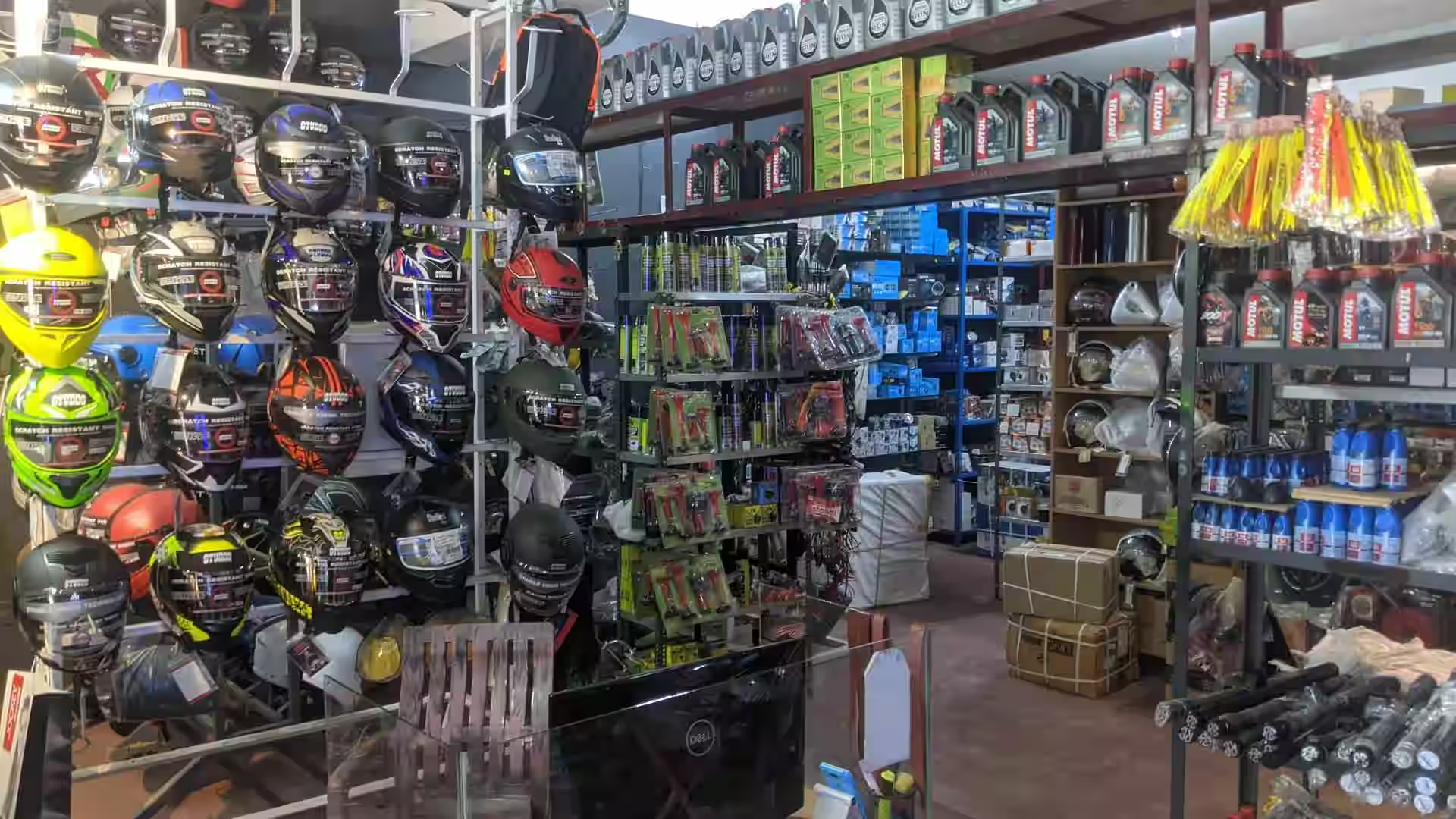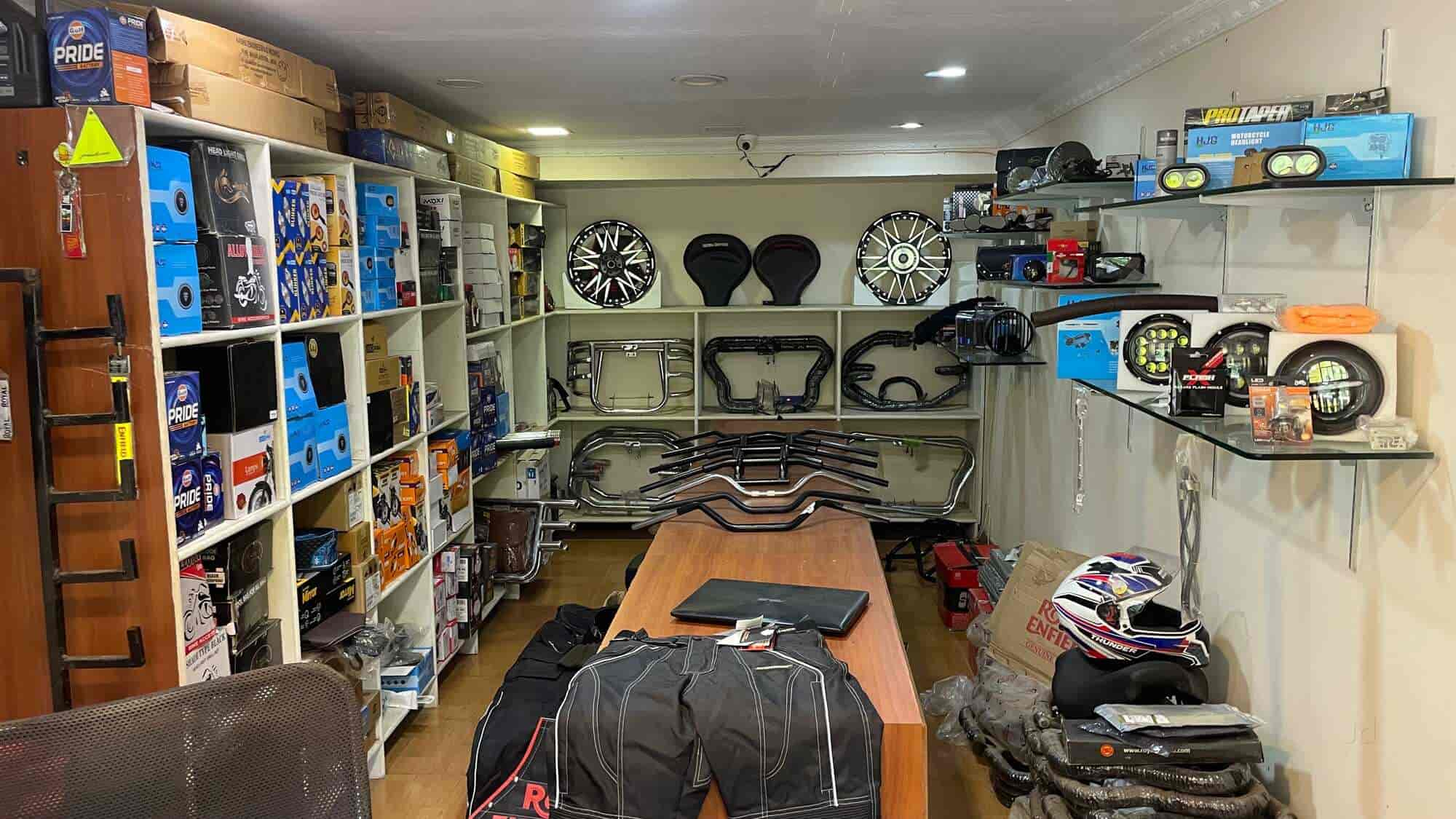Understanding the Important Parts of a Bike: A Comprehensive Overview for Fanatics
For bike lovers wanting to boost their riding experience and ensure their bikes run smoothly, understanding the important parts of a motorbike is extremely important. Each element, from the engine's detailed operations to the vital duty of the braking systems, not only affects efficiency yet likewise security and convenience. This guide will go through the basic parts that every biker need to recognize with, enabling notified selections in both upkeep and potential upgrades. As we begin this exploration, one must ask: how does each element connect to develop the smooth experience every fanatic seeks?
Engine Parts

The camshaft plays a vital duty in managing the timing of the engine's shutoffs, making sure the precise opening and closing essential for effective fuel and air consumption, in addition to exhaust expulsion. This timing is important to maintaining optimum engine performance and efficiency. In addition, the carburetor or gas injection system, depending on the motorbike model, is in charge of mixing air with fuel in the appropriate proportion for burning.
The cooling system, either air or liquid-based, works to maintain the engine's temperature level within functional restrictions, preventing getting too hot and making sure long life - mx gear nz. Each part, carefully designed and incorporated, adds to the smooth operation of the engine, specifying the bike's power output and overall performance
Transmission System
Integral to the motorbike's performance, the transmission system ensures effective power transfer from the engine to the wheels. This system consists of several important elements, including the clutch, gearbox, and final drive, each playing a crucial role in converting the engine's power right into motion. The clutch, typically operated by a hand lever, serves to involve and disengage the engine from the transmission, permitting smooth equipment modifications and regulated acceleration.
The gearbox, typically referred to as the transmission proper, contains a set of gears that motorcyclists can by hand shift through to readjust the bike's speed and torque output. These equipments are organized in a series that enables the motorcycle to accelerate smoothly and preserve optimum engine efficiency across different speeds. Most bikes make use of a sequential gearbox, requiring the rider to move gears in a fixed order.
Braking Mechanisms
While understanding the transmission system is key to taking advantage of a motorcycle's power, just as vital is the capacity to control and quit that power effectively, which is where stopping systems come into play. Brakes are critical for safety and efficiency, offering the biker with the essential control to navigate various terrains and conditions. Typically, bikes include 2 kinds of stopping systems: disc brakes and drum brakes.
Disc brakes are much more widespread in modern motorcycles because of their premium efficiency. They are composed of a brake disc, caliper, and pads. When turned more helpful hints on, the caliper squeezes the brake pads against the rotating disc, transforming kinetic energy into heat, thus reducing the wheel. This system provides much better warmth dissipation, regular efficiency, and enhanced quiting power, specifically in damp problems.
Alternatively, drum brakes, though less usual, are still discovered in some bikes. They work by pushing brake footwear versus the inner surface of a drum affixed to the wheel. While generally much less efficient in heat dissipation and quiting power, drum brakes are less complex and more cost-effective.
Comprehending these stopping systems' subtleties enables cyclists to maintain their motorcycles effectively and appreciate the engineering that guarantees secure and reliable stopping.
Suspension and Guiding
Suspension and steering systems are vital elements that considerably influence a bike's handling and ride convenience. The shock absorber, containing forks at the front and shock absorbers at the rear, soaks up road irregularities, enhancing stability and control. Front forks, commonly telescopic or upside down, compress and rebound to minimize impacts, while rear shock absorbers keep tire contact with the road, important for grip and safety and security.
Steering, centered around the handlebars, connects the rider to the motorbike's directional control. The steering head bearings make sure smooth procedure, enabling exact ability to move. Proper alignment and upkeep of these bearings are important for predictable steering action and minimizing motorcyclist fatigue.
The suspension's adjustability is one more crucial element; preload, damping, and rebound settings permit customization to match numerous riding designs and conditions. This flexibility is important for enhancing performance, whether navigating city streets or tackling tough tracks. Developments like electronic shock absorber offer real-time modifications, improving adventure top quality across varied surfaces.

Electric Equipments
After guaranteeing a smooth and controlled ride via effective suspension and steering systems, focus turns to the electrical systems, a pivotal facet of modern bikes. These systems play an essential role not only in starting the engine but additionally in powering numerous elements that improve the functionality and safety and security of the motorcycle.
At the heart of a motorbike's electrical system is the battery, which shops electric power mens riding gear needed for starting the engine and powering auxiliary systems - mx parts nz. The generator or generator, combined with the rectifier-regulator, makes certain the battery stays charged while the bike is in operation, converting power into electrical power and maintaining voltage levels
The ignition system, an additional critical component, is accountable for firing up the air-fuel mix in the engine's cyndrical tubes. Modern motorcycles often use a digital ignition system, offering higher efficiency and integrity compared to conventional systems.
Lights systems, consisting of fronts lights, tail lights, and signs, are also vital, ensuring visibility and safety and security for the biker. Extra electronic parts such as sensing units, control systems, and displays add to sophisticated attributes like gas injection administration, anti-lock braking systems (ABDOMINAL), and electronic dashboards, further enhancing the riding experience.
Conclusion
A detailed understanding of a motorbike's important components, consisting of the engine, transmission system, stopping mechanisms, suspension, steering, and electric systems, is vital for fanatics aiming to maximize performance, safety and security, and convenience. Proficiency of these aspects permits notified decisions pertaining to bike exhaust maintenance and upgrades, eventually improving the riding experience. By integrating this understanding, bikers can ensure their motorcycles operate at peak efficiency and dependability, thereby making best use of both pleasure and long life of their cars.
For motorbike lovers looking to boost their riding experience and ensure their bikes run smoothly, understanding the necessary components of a bike is vital.Essential to the bike's functionality, the transmission system ensures effective power transfer from the engine to the wheels.While understanding the transmission system is crucial to utilizing a motorbike's power, just as crucial is the capacity to manage and quit that power efficiently, which is where stopping devices come into play. Typically, bikes include two types of braking systems: disc brakes and drum brakes.
An extensive understanding of a bike's important components, including the engine, transmission system, stopping mechanisms, suspension, guiding, and electric systems, is indispensable for fanatics aiming to maximize safety, convenience, and efficiency.